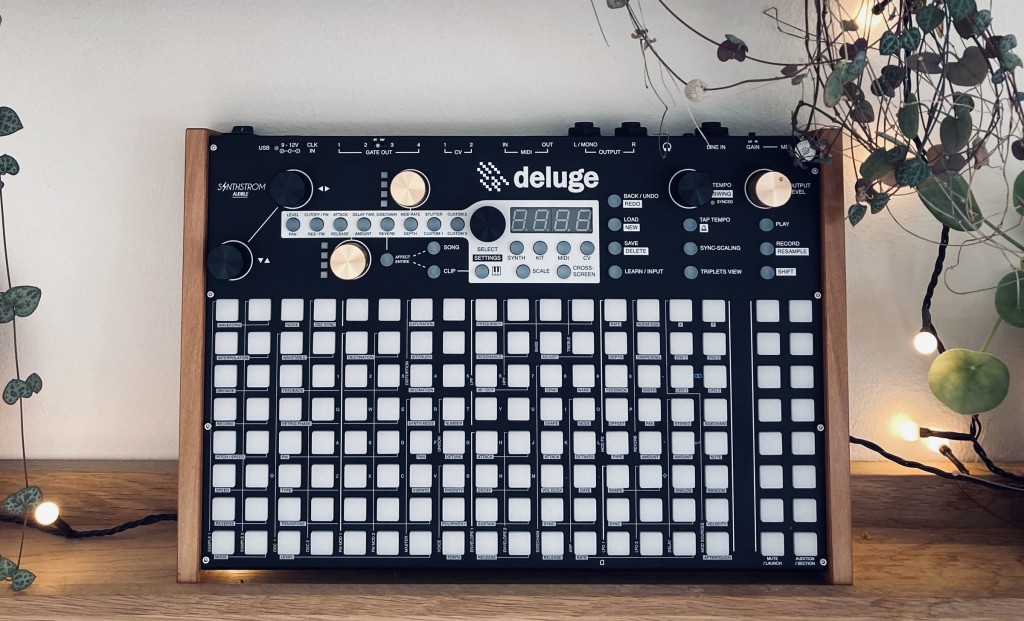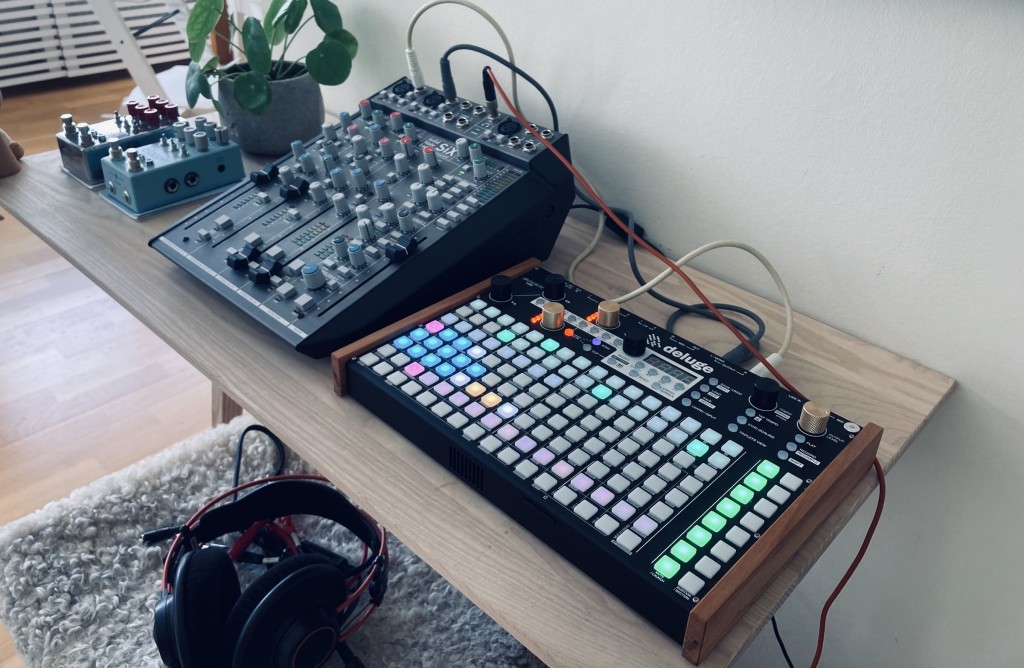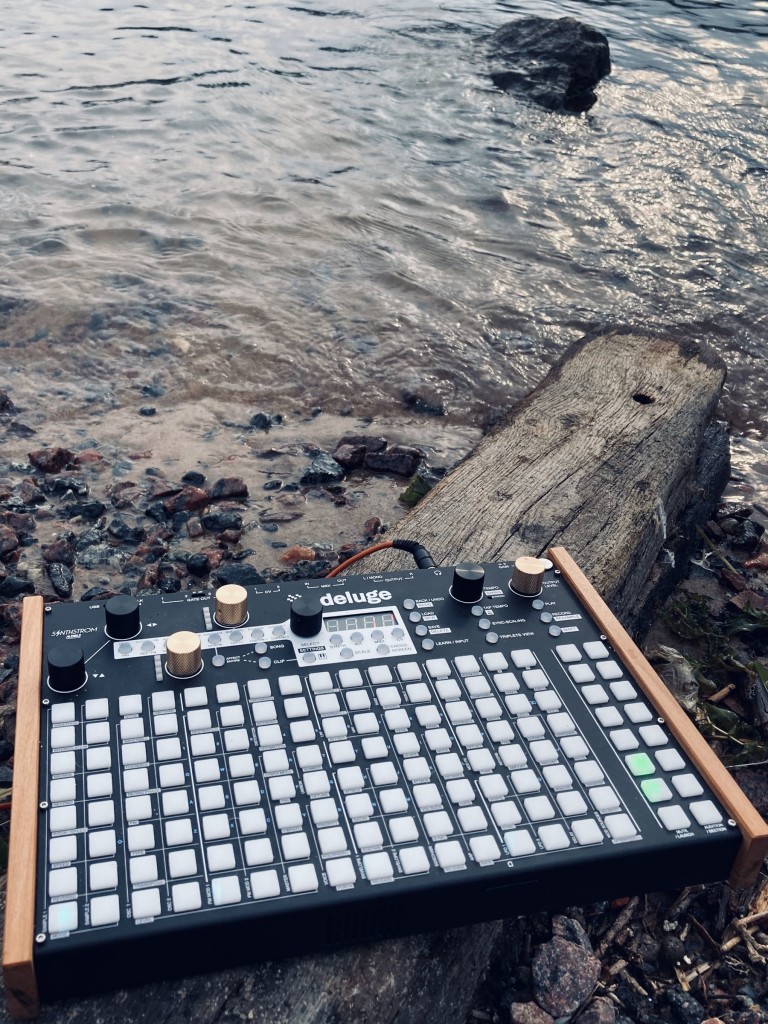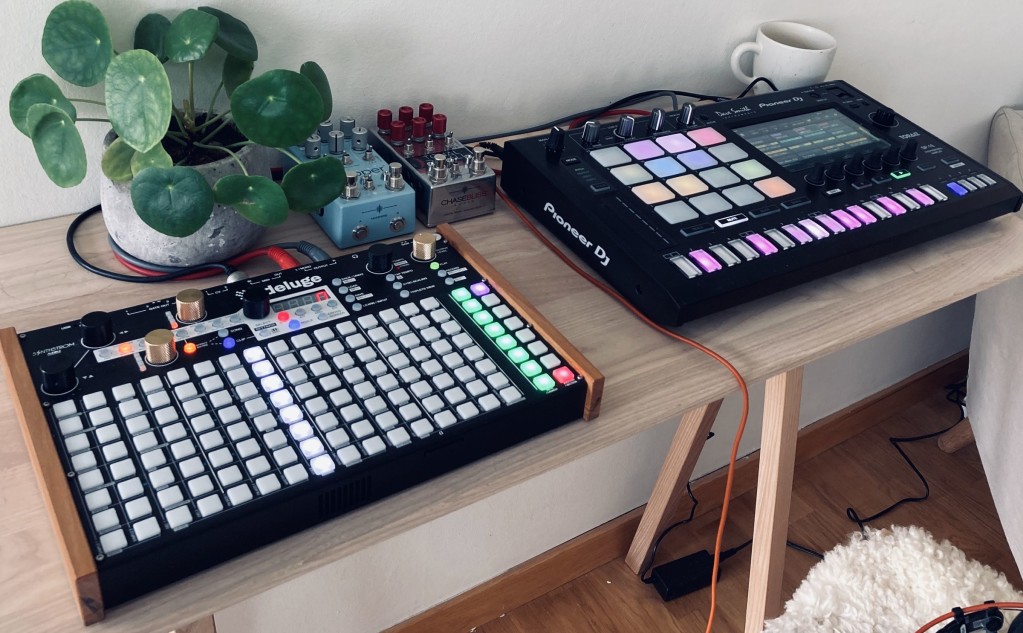Our friend Andreas Roman, hailing from Sweden, that storied land of music machines, is back with another of his deep-dive reviews. Next up: Synthstrom Deluge.
And yes, again rather than rush a review of a new toy with the very first version of its firmware, Andreas takes the time over the long haul working with the instrument the way we do as musicians.
Let’s start with a track from Andreas first, made entirely on the device: “this one really pushes the Deluge as far as polyphony, synth engine, and [production] goes. Samples are field recorded straight into the Deluge from the river where I live.”
circuitghost · Synthstrom Deluge – Clear Blue Skies
Summer rain
That was the first track I ever heard from Scott Hansen, known as Tycho, from his debut album Past is Prologue. I heard it on a good year, the kind with festivals and blue skies. My friends were always around and every house had a party in its kitchen.
That was some time ago, but those images return to me when I sit down and play the Deluge, perhaps because the tones from this remarkable instrument remind me so much of Tycho’s work. It takes me to a place where the rain was always warm and the sun would never set.

The origin story
The Synthstrom Audible Deluge begins with Rohan Hill in New Zealand. Hill is an accomplished musician with a solid education in technology. He used his mix of skills and passion to build hardware for his own musical projects, and from this tinkering emerged the idea that eventually led to the Deluge. Hill’s original ambition was to build a few units and sell them to friends, but when Ian Jorgensen came on board in 2015, the concept grew into the possibility for a business. Jorgensen’s experience as a music publisher and events organizer helped shape the plan and in 2017, Synthstrom launched their debut product.
The Deluge embodied Rohan Hill’s ideas about music workflow. But it was also a response to a long-running lament across the world of electronic music – that making and performing music with computers wasn’t as satisfying as it had promised to be. For full-on productions in a single piece of hardware, you’ve got few options – keyboard workstations, legacy behemoths from Roland and Yamaha, and more modern boxes constrained in functionality. That’s not to knock the Octatracks or Electribes, but there was room for a new approach.
So the message was clear – to all you musicians wanting to fully unchain yourself from a computer, the Deluge creators hear you.
Bring me everything
Okay, so what is the Deluge and what can it do? Actually, what can’t it do? It’s a complete production environment. I won’t call it a groove box, cause I’d be selling it short if I did. If I listed every feature in detail, you’d start the search of what’s missing and of course, you’d find something and you’d go, “Hey, it doesn’t really do everything after all.”
But really, as far as sitting down and writing a track, create an album or build a show, all the tools you need are here. Synths. Sequencers. Samplers. Drum tracks. Recording. Looping. Audio streaming. Mixing. Mastering. Performance. You can approach it as a singular environment away from the computer. Or it’s great in context, too, with modular and midi gear, external processing and whatnot. It doesn’t have to play on its own. It’s just pretty damn great when it does.
A grid without limitations
With an instrument so rich and deep, it’s more about how you work with the Deluge and less about its options. It has an eight-by-sixteen grid that looks a bit like monome’s original controller, but above hovers a control panel with buttons and knobs that do (a lot of) different things, depending on context. I suppose you could say that you write and structure your music on the grid, and you shape your sounds and mix with the panel. If the grid is your sheet, the panel is your tool to conduct the music on that sheet.
It’s a somewhat abstract workflow, despite the fact that the views are familiar. There’s a piano roll for synths and MIDI output and you got x0x-step style for drums and samples, though you can throw in synths in the x0x-view and apply sampled sounds in the piano roll interface. Each button-push is a binary affair – just operate the grid buttons and sounds will play. It’s so familiar that the first adjustment is just to the freedom of the grid. We’re now all used to the more traditional sixteen push buttons lined up in a single row. Here, you move across the grid to access more sequence steps and it doesn’t stop at 64 or 128 or 256 or whatever else silly number we’re usually limited to by sequencers – it stops whenever you say it stops. I get to choose the length of my sequence? Me? Petit mois? Get out of here.
This is the way Synthstrom approaches almost everything. Those limits you’re used to, many of them don’t apply here. The Deluge defines its own rules on how to write a song on an electronic instrument. It’s a full circle where the traditional meets the future and they get along just great.

Synths and samplers
The Deluge isn’t necessarily going to replace your favorite synth. But its onboard synths are not to be dismissed, either. Like any instrument worth its salt, the Deluge has character and if you appreciate that, it sounds bloody great.
Granted, the onboard synth presets, ranging from SH-101 bass patches to Daft Punk leads, reach varying degrees of success. Envelopes are a weak point – while they’re great for long releases and sustains, they’re not capable of particularly snappy short durations. [Ed.: That sounds like something that could be addressed by some parameter adjustments and/or preset ‘voicing’/sound design, so Synthstrom, hope you’re listening.] But the filters are great, especially the Drive filter. You can get low-pass and high-pass filters running in parallel to add flavor or just trim the frequencies.
And the Deluge truly excels at long, sweeping pads, evolving leads and deep, subtle bass. This is what brings me back to that summer, those sustained tails and dripping delays – that grain and dust behind the chords, and the soft but present bass that carries it all. Scott Hansen would be pleased. Modulation lets you go still deeper; Deluge has plenty of sources and destinations to route your sound design from here to strange but cool places.
As far as the sampler goes, it doesn’t have the atmospheric presets of the Elektrons, or anything to add dirt/grunge like a vintage SP box. But I kind of like it that way, because with a neutral sound, I can add my own color through a Chase Bliss pedal or two, resample the results back into the Deluge and take it from there. Naturally, the Deluge streams audio, so if you have a five-hour improvisation going with your pedalboard, you can just hit record, limited only by your SD card size (and maybe your sanity). One New Zealander can make this work, even as Akai and Pioneer for unknown reasons can’t. Audio recording can be used for real-time looping as well, with a few clever automation moves akin to tapping your feet on a pedal to add layer upon layer.
There’s an onboard microphone, which I at first dismissed with a nonchalant wave. But as I was carrying the Deluge with me in my backpack, like one tends to do when one is out and about (to shop for groceries), I stopped by the river, sat down and recorded some water ambience straight into a sample kit and applied it in a song. Turns out, the microphone’s great for capturing textures and environmental sounds.

The mix
Onboard mixing has volume, panning, and a simple but efficient two-band EQ – on each track and on the master. There’s the odd omission of a master compressor, and I say odd because the Deluge has so much else covered, it’s an interesting choice to leave out such a fundamental part – especially as the output truly benefits from some light compression. There is a crude side chain compression effect present, though, which gives you the classic pump. You also get reverb and delay plus chorus, phaser, saturation and so on.
The more gritty effects tend to destroy the sound rather than enhance it, and this is perhaps where the Deluge is at its weakest. Work them too hard, and the overall image tends to get a bit over-processed. Elektron’s distortion effects are more flexible. But you can still use streaming and resampling to add your own outboard effects.
Also, these mixing parameters and a few others are accessible from the song view, which essentially makes it your interface for live performance – complete with DJ filter sweeps and EQ thumps, stu-stu-stutters and delay tails, reverb showers and mute-unmutes.

Flow
Even if you’ve been on grids before, be it a Launchpad or a Medusa, you are only partially prepared for what it’s like to work with the Deluge. The idea to embrace is that you don’t need to follow a specific process to get stuff done. Shortcuts and quick commands allow you to leap between views as ideas strike, reaching out to edit almost anything from anywhere.
Writing music on the Deluge is an organic affair, not a linear one. You can batch clips into sections and then construct songs from them. The hierarchy is not there to string you along. It helps you focus on what’s important, and give you the option to follow a hunch when it wants to take you somewhere. Once you’ve learned to move between the views, you’ll find it’s not just a convenience, it’s a great way to work with music.
For me, as a piano player, I’m finding that when I’m fluent with the Deluge, I’m not programming it. I’m playing it, no matter if I’m designing a sound, building a loop or patching together a song. It’s also worth connecting a controller, since the Deluge responds to both velocity and aftertouch.
Conclusion
The Deluge has grown at an amazing rate since its launch. After three years, the firmware is now on 3.x, with a huge amount of functionality to explore. Polyrhythms? Yep. Different time signatures? Sure. Does it talk CV? You bet. How’s it with MIDI? Super. Battery-powered? The rechargeable kind. Multi-sampling? Ja. Does it look cool? I certainly think so. It even cues up your projects as you load them, allowing seamless transitions from one set to another, no glitch or anything, and that combined with audio streaming, virtually removes any limits for set lengths or similar bodies of work. So you can work on your symphony in the morning, get into your jingle and commercial stuff during the daytime hours, throw in your stems as the evening comes, and DJ the night away, all with just the Deluge.
And that’s the point. This instrument takes a holistic view of music production. You can start with one note and finish with an album without ever moving from this one box. For some, that idea sounds great in theory but just gets confusing when you have to learn a new device. For others, it’ll be a blessing and they’ll shed tears of joy that someone finally went ahead and built this thing. But no one can argue that it’s anything but a marvel, the kind of genius design that could only be spawned from a singular vision where development grows from skill and inspiration rather than design-by-committee.
That this comes from a small, boutique maker doesn’t mean you compromise. Customer service, presentation, build quality, design, the manual – everything about Synthstrom is alpha level, challenging the competition not only in design and implementation but by taking the business side of it seriously. It’s a gem that glitters from all angles. If you’re serious about hardware, this could be the one.
https://synthstrom.com/product/deluge/
Ed.: Obviously the other device that had a similar set of goals – albeit with its own workflow – was the planned dadamachines composer pro. We saw that in early prototype form at last year’s Superbooth, but it seems not to have made it to production. If the developers revisit the idea, we’ll obviously take a look.